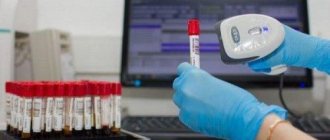Often, children exhibit dangerous symptoms that require immediate intervention from a pediatrician or other doctor. For example, diarrhea with blood in a child is a reason to sound the alarm, because this symptom may indicate the presence of a number of dangerous diseases and pathologies. It is important for both mom and dad to remember that the diagnosis and treatment of any childhood disease can only be carried out by a professional doctor. And for parents, it is important to promptly detect blood and mucus in the stool, call an ambulance or go to an appointment at a children's clinic.
The importance of quick response
The health of children is of paramount importance to parents. There are a lot of cases when a lightning-fast reaction is required from parents. These include a situation in which a child has diarrhea with blood. This can indicate either minor problems in the functioning of organs or a serious malfunction. Before taking action, parents must understand why this condition occurred. And this needs to be done as soon as possible in order to provide timely and adequate assistance. So, not every parent will immediately realize that if you do not pay attention to diarrhea, the child may become dehydrated. And for a child’s body this is much more dangerous than for an adult.
In addition, a delay in treatment inevitably leads to irritable bowel syndrome in a child, which can last three weeks or more. But blood in the stool can also be due to a fissure in the anus; it does not have to be an infection. In any case, the appearance of such a sign is a serious reason to go to the hospital.
Main reasons
This pathology in children is conventionally divided into two groups. The first is characterized exclusively by diarrhea with a mucous manifestation, and is directly related to the process of development of the body and growth (absolutely does not pose any threat to the body).
The second group includes diarrhea with blood and mucus - this indicates a disease and poses a threat to the baby’s health.
Table. Diarrhea at different ages with mucus
| Child's age | Explanation of diarrhea |
| If the baby’s parents observe the appearance of mucous inclusions in the stool, then there is no need to worry. The specificity of intestinal function at this age is characterized by increased mucus production. Such physiological characteristics are an auxiliary factor for the adaptation of the digestive system. The mucus produced serves to protect the intestinal epithelium, liquefy food, and then move it along. However, if blood appears, urgent consultation with a doctor is necessary. | |
| At this age, the child is actively cutting teeth. A disruption of the digestive process is possible. This is explained by the increased production of saliva, which triggers increased peristalsis, thus activating the process of mucus production in the intestines. Again, diarrhea can not be considered a pathology in this case if there are no blood spots. | |
| If diarrhea occurs, parents should consult a doctor. |
The appearance of mucous patches in the stool may be evidence of a reaction from the immune system. A similar protective reaction of the body occurs with ARVI, rhinitis, allergic reactions, and dyspeptic disorders.
Causes of pathological appearance of blood and mucus in stool
Parents need to be attentive to changes in the consistency and color of stool, as well as the presence of undigested particles, blood and mucus in the stool. If diarrhea is normal in a child, under no circumstances should there be blood impurities.
It is necessary to pay attention to the fact that poor nutrition, consumption of beets, and dysbacteriosis cannot lead to the appearance of blood in the stool.
If parents detect blood and mucus after defecation in a child, the following diseases can be assumed:
- acute intestinal infection (for example, salmonellosis);
- bleeding in the digestive tract;
- presence of parasites;
- the presence of polyps in the large intestine;
- the appearance of hemorrhoidal nodular neoplasms followed by an inflammatory process;
- formations of a malignant nature.
If a child has red blood that completely saturates the stool, then this is a sign of bleeding in the lower intestine. Bloody spots are a symptom that characterizes hemorrhoids. If dark red clots are observed in the stool, then the diagnosis may show peptic ulcer disease, pathology of the gastrointestinal mucosa.
In the absence of an increase in temperature, in the case of polyps (benign neoplasms of the intestinal mucosa), inclusions of scarlet blood cannot be ruled out. However, as the polyp increases in size, diarrhea with blood occurs.
Often, diarrhea with mucus and blood is a symptom of Crohn's disease and peptic ulcers. These pathologies are characterized by the following symptoms:
- systematic appearance of blood in the stool;
- defecation at night;
- temperature increase;
- sleep disturbance;
- growth slowdown;
- weight loss;
- general deterioration in well-being and decreased activity level;
- lack of appetite.
If the above symptoms are confirmed, an urgent visit to a gastroenterologist is necessary.
Bloody diarrhea with or without fever
Diarrhea in a baby may be accompanied by accompanying symptoms: abdominal pain, vomiting and nausea, a decrease or increase in body temperature. If diarrhea is accompanied by fever, before the ambulance arrives, you can give the child an antipyretic drug - Ibuprofen, Paracetamol and others in the form of syrup. The main task of parents is to prevent dehydration.
To do this, after each bowel movement, it is necessary to give the baby food to replenish lost fluid, glucose and minerals - Humana electrolyte, Regidron. You can prepare the solution yourself. For this, 1 tsp. salt, soda, 2 tbsp. l. sugar must be dissolved in chilled boiled water (1 liter). The child should be given the solution frequently and in small portions, 2 tsp each. every 10-15 minutes to reduce the risk of vomiting.
It is good to give your baby smecta, activated carbon, polyphepan or enterosgel, which help remove toxins and infection from the baby’s body. The combination of diarrhea and temperature indicates the presence of an acute intestinal infection in the body, poisoning, the presence of E. coli, teething, chronic diseases, and helminth infection.
Features of the treatment of diarrhea in children
Regidron is used for rehydration.
Since diarrhea is not an independent disease, but a separate symptom, a correct diagnosis must be made. If the doctor believes that diarrhea does not pose a great danger and can be treated on an outpatient basis, he will prescribe treatment.
Under no circumstances should you give your child medications on your own. The doctor may prescribe:
- enterosorbents for removing toxins,
- cytomutoprotectors to protect the intestinal walls,
- antipyretics,
- antispasmodics,
- drugs to restore water and electrolyte balance.
The most important thing in treating frequent diarrhea in a 1-year-old child is restoring lost fluid. For rehydration, use Regidron, Oralit - pharmaceutical preparations. They are bred and given to the baby in accordance with the instructions. The child needs to be given water every 7-15 minutes, giving him 1-2 teaspoons of the diluted product.
If necessary, you can prepare such a solution yourself. To do this, stir a teaspoon of fine salt, half a teaspoon of soda, and a tablespoon of sugar in a liter of boiled water. You can replace soda with the juice of two oranges or grapefruits. At the same time, the sugar rate doubles. For diarrhea, enterosorbents are considered safe remedies without side effects:
- Microsorb. An analogue of activated carbon, available in various dosage forms: capsules, tablets, granules, in the form of powder or paste for preparing a suspension. For children under one year of age, it is most convenient to use the drug in the form of an aqueous suspension. Its daily dose is calculated depending on the child’s weight: 0.5 g per kg, unless the doctor prescribes a different dosage.
- Polysorb. A powerful tool for cleansing the child's body of harmful toxins. It has a specific taste, is not absorbed through the walls of the mucous membrane of the stomach and intestines, but, like a sponge, it absorbs harmful substances. Polysorb for children 1 year of age is used in the form of a suspension diluted in compote or tea. One dose requires less than a teaspoon; you can repeat this medication 2-3 times a day. It is more convenient to give the medicine through a syringe with the needle removed. Unused suspension must be disposed of at the end of the day.
- Enterosgel. A very easy-to-use drug, available in the form of a gel or paste, ready-to-use, sweetish in taste and with a pleasant odor. The product envelops the intestinal walls, protecting it from damage. It does not enter the bloodstream, it acts like a sponge, capturing waste products from the intestines and bringing them out. For children aged 1 year, a dose of the drug of 5-10 g is needed, divided into two doses.
- Smecta. The drug acts as an adsorbent, creating a protective coating on the mucous membrane, protecting it from rotaviruses and other microorganisms. Available in powder form, packaged in sachets. Children aged 1 year need to take one sachet per day. It is diluted with juice or compote and given to the child, dividing the product into two doses.
How to treat diarrhea with blood and mucus in a child
The therapeutic regimen is based primarily on an accurate diagnosis. When the root cause of the pathology is identified, the doctor can prescribe the correct medications.
Treatment methods
- When the cause of the disease is a specific pathogen. To begin with, the pediatrician directs the child to undergo a test to determine the sensitivity of the microorganisms present to antibacterial substances. Empiric therapy is then prescribed. When the pathogen is not specific, treatment with antibiotics is required (Amoxiclav, Tetracycline, Amoxicillin are used for children).
- For viral infections, human interferon is used. This is a universal antiviral agent of natural origin.
- If studies have detected antibodies to Hb.Pylori, then eradication of the bacterium with complex suppression with antibiotics is necessary (course of treatment for at least seven days). The selection of phased eradication occurs on an individual basis.
- In case of Crohn's disease, the child requires immediate surgery.
All inflammatory diseases of a chronic nature are equated to a precancerous condition, so preventive observation is required once a year by a gastroenterologist. For children prone to such pathologies, observation should be systematic - once every six months.
How to avoid diarrhea?
In order to prevent the above problems, parents need to know that careful adherence to basic preventive measures related to proper nutrition and hygiene will help to avoid them. The child should have a healthy diet appropriate for his age. Check the expiration date of products, exclude all products with artificial colors and additives, as well as sausages, especially smoked ones, mushrooms and seafood.
- Strengthen your children's immunity every day.
- Carefully observe the rules of hygiene and teach your child to follow them; wash your hands and fresh vegetables, berries and fruits before eating.
- The child should drink only boiled water.
- You cannot swim in prohibited areas.
- Avoid contact with infectious patients.
- Follow a diet for nursing mothers.
- Cook meat, fish, eggs and milk.
Therefore, parents should identify it as quickly as possible and seek help from a doctor who will promptly make the correct diagnosis and prescribe all the necessary treatment.
Which allergen to exclude?
The most common allergen is cow's milk protein.
Cow's milk is the basis for the preparation of standard milk formulas for babies, but dairy products can also be present in the diet of a nursing mother, later penetrating into breast milk.
By the way: Back in 1921 (almost a hundred years ago!) the possibility of allergens from the mother’s diet entering breast milk was proven.
There are about 25 different allergen proteins in cow's milk, some of which are found in the milk of other animals - goats, sheep, and so on.
The most significant allergens are beta-lactoglobulin and casein.
Therefore, to check the breastfeeding of children, the mother switches to a dairy-free diet, and bottle-fed children are transferred to a special formula, where milk protein is broken down to the smallest fragments (deep hydrolysates) or absent (a solution of amino acids instead).
Amino acid mixtures are the most non-allergenic and safe even for severe allergy sufferers, but are much more expensive than hydrolysates.
During the trial diet, mothers often exclude beef/veal for a while - 10% of children have a chance of cross-allergy.
When to sound the alarm?
Bloody stool appears for various reasons. Parents do not need to panic and be very frightened, asking everyone they know and spending hours on the Internet using the search phrase “why does the child have blood in his stool. If the following symptoms are observed, you should contact a specialist immediately:
- continuous bleeding;
- bloody vomiting;
- elevated temperature;
- stomach ache;
- lack of stool for several days.
If the baby’s health is normal, you can observe him for several days. Perhaps the red coloring of the stool is associated with the consumption of certain foods that were in the diet of the child or mother, if the baby is on breastfeeding.
When is medical attention required?
Diarrhea is dangerous due to dehydration
If an infant receives only breast milk, the normal amount of stool may vary. Even if the baby does this after every meal, there is nothing to worry about. But if the child is artificial, then he should walk no more than 2 times a day.
Babies who have reached the age of 6 months have stool about 3 times a day if they are still breastfed but are actively receiving complementary foods. If a baby has stool more than 2 times a day, then we can talk about diarrhea. There is a list of cases when you cannot delay with the help of doctors. These include the following:
- stool more often than 6 times;
- watery stool;
- fetid smell;
- green color of stool, the presence of a flaky mass of orange shades;
- red shades of stool, presence of blood;
- diarrhea is accompanied by an increase in temperature or regurgitation in the form of a fountain.
If loose stools have become a common occurrence, the child often spits up, and weight gain leaves much to be desired, a comprehensive examination is necessary. It is quite possible that there is a serious illness. First, the following tests are prescribed:







